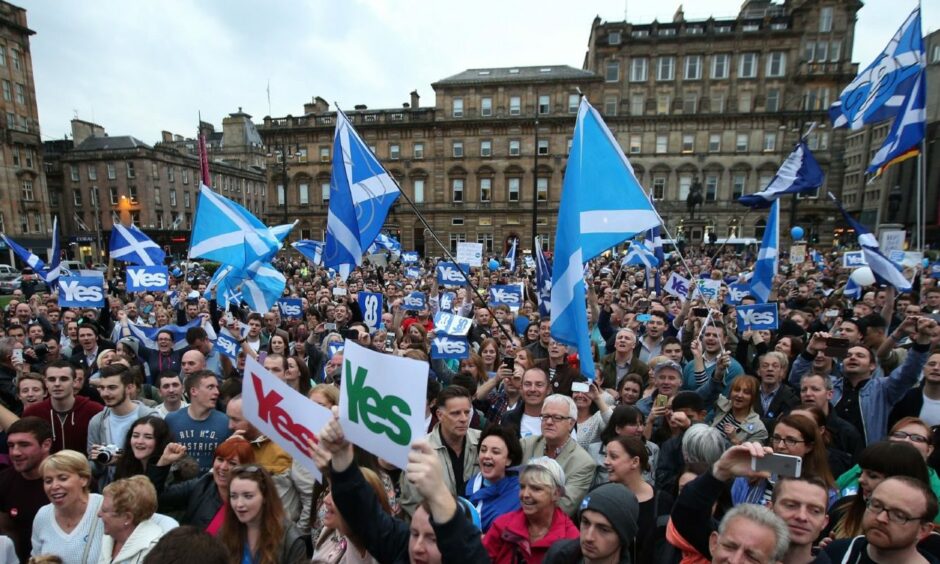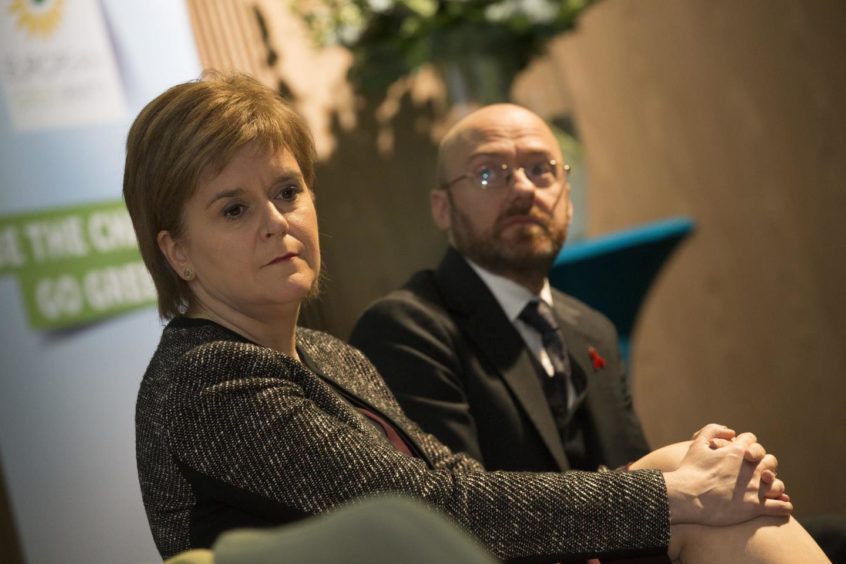If you wanted independence, and happened to be a Scottish Government, with some powers but not all, how should you best operate?
You could follow the approach the SNP have taken for the last decade plus, and be cautious to the point of inertia.
There is a time and a place for that sort of approach.
In the run-up to the 1997 election, which the polls showed was Blair’s to lose, Labour took the fewest risks possible.
Instead they moved “like a man carrying a priceless Ming vase across a highly polished floor”, as Roy Jenkins put it.
But that was in opposition. In government, you normally want a list of achievements to toot your horn about at the next election.
The SNP have felt less pressure to deliver a list like that, given the state of the larger opposition parties they’ve faced.
The Tories keep drifting to the right, with a leader now who just four years ago said his top political priority was “tougher enforcement against gypsy travellers”.
Similarly, Labour have changed leaders more often than I have changed lightbulbs over the same period.
Their main priority always seems to be shoving their own colleagues into a circular firing squad.
SNP eyeing a bigger prize
What distinguishes the SNP from others who’ve managed high office, though, is where they’re trying to tiptoe to with the Ming vase: victory in a second independence referendum.
In broad terms, when you take both sides’ irksome flags out of it, either you think some crucial decisions should continue to be taken at Westminster on our behalf, or you think those should be taken in Holyrood instead.
One way to make the latter case might indeed be masterly inactivity.
It just might not be the best way.
An alternative approach would be to make the case on a week-by-week basis that the existing powers are not enough.
Take every appropriate opportunity to demonstrate that we could and would be doing more.
There is just such a mechanism in the Scotland Act, which set up Holyrood and determines which decisions are taken where.
It gives a route for Scottish Ministers to ask Westminster for the power to act beyond the limits that Act itself sets, a route known to wonks as Section 30.
Its most famous outing was when the SNP asked the Tories for permission to run the first independence referendum.
And it can be used to ask for a one-off power to legislate on anything that’s reserved.
The moon’s reserved
Years ago I worked in Parliament’s own press office. In week one a journalist rang to ask me about the moon.
My boss just laughed and said “the moon’s reserved”.
Now I’m not suggesting Scottish Ministers ask for the moon.
But the SNP have already decided they want to take more control over drug policy, quite rightly. And the power to allow safe consumption rooms is reserved to Westminster.
Tomorrow's Daily Record leads on drugs minister Angela Constance saying Scotland will bring in safe drug consumption rooms – and defy the UK Government #scotpapers #tomorrowspaperstoday @AllieHBNews pic.twitter.com/97KLl9v9UT
— The Daily Record (@Daily_Record) August 3, 2021
So file a request for an order under Section 30 for that and see what they say.
I’d go further and ask for powers to allow wider legalisation and regulation of drugs.
The evidence on public health and safety grounds is unarguable, especially from Portugal.
Scottish Government could be bolder all round
And then Ministers could do the same where Westminster says we can’t do more to limit plastic waste.
They could ask for more flexibility to protect workers’ rights and tackle zero hours contracts.
Want to do more to prevent companies registered in tax havens operating here? Put in the request.
On the tax front we have much less control even than a US state. Why not make the case for something closer to that level of flexibility.
A Scottish Government that wants us to be independent could right now be setting policy as if Scotland was already independent
Over and over again, when you work on policy, you come across areas where some elements are devolved to Holyrood and some reserved to Westminster.
Areas where civil servants and lawyers suck their teeth.
Finding eminently sensible areas of policy to bring together like this would be utterly straightforward.
Apart from issues like becoming a republic or setting up our own currency, a Scottish Government that wants us to be independent could right now be setting policy as if Scotland was already independent.
Where we do not have the powers, make the case for them, both to Westminster and to the Scottish public.
A win-win for Scottish Government
Strategically, it’s the simplest of win-win options.
If the policies are good, and Westminster agree to let Holyrood deliver them, then that’s inherent progress.
Beyond that, Scotland accrues a little more power. The case for self-government grows.
In a few cases, such as trying to overturn damaging drug legislation, lives would actually have been saved.
Conversely, if Westminster says no and prevents Scottish Ministers bringing in some particular practical and popular policy, well, that also helps make the case for independence.
Especially if they say no over and over again.
An SNP-only government may not be bold enough to operate like this, even with a younger and more progressive Cabinet.
Perhaps the doom-mongers are right: maybe Greens joining them in government would indeed signal the end for the Union?
James Mackenzie is a freelance media and public affairs consultant and former head of communications for the Scottish Greens.













